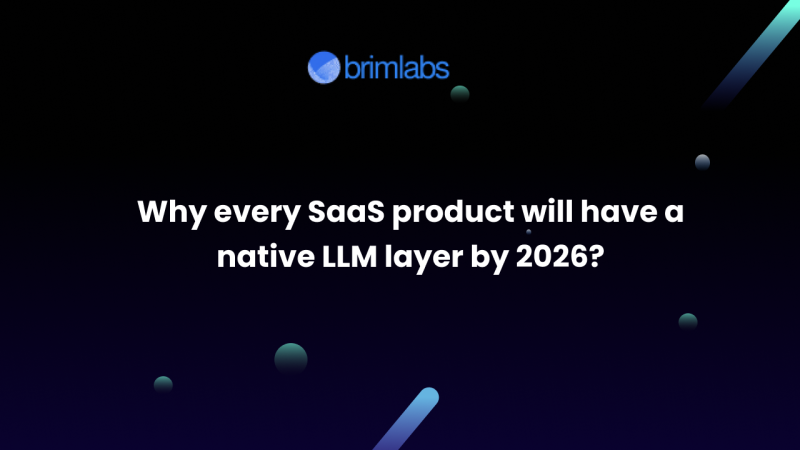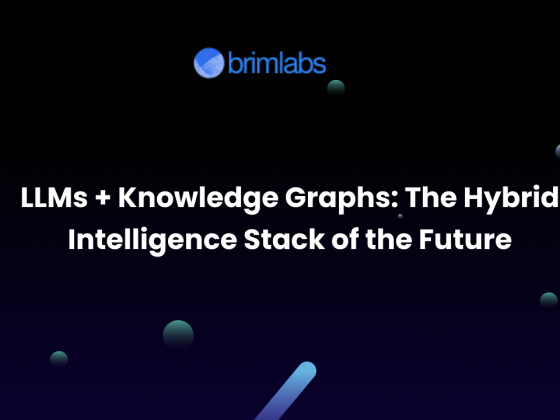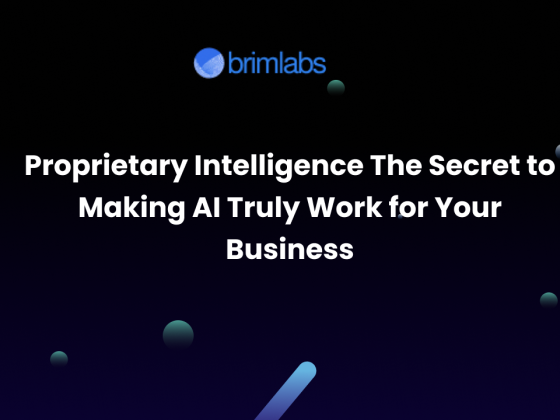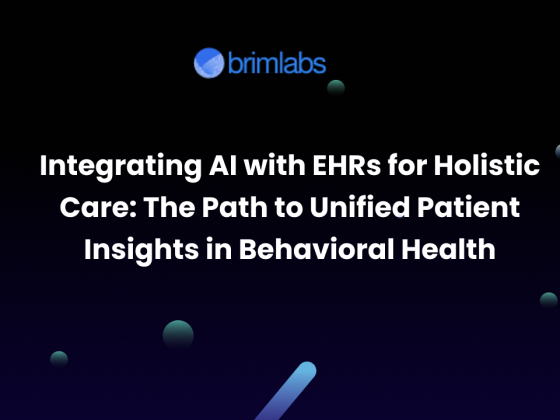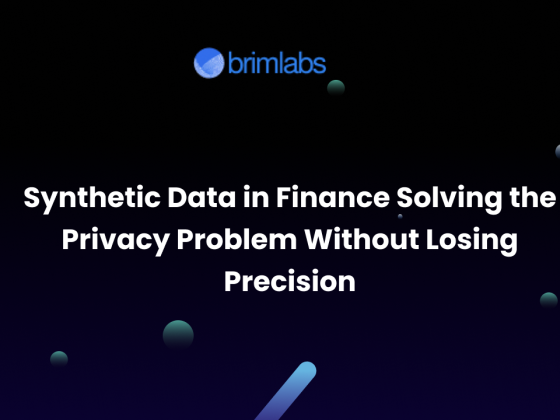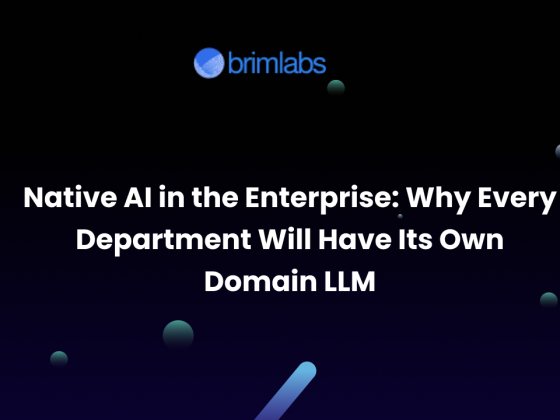Software as a service is no longer only a delivery model for applications. It is becoming a delivery model for reasoning, decision support, automation, and conversation. The world that is forming is one where every meaningful business workflow has an intelligence primitive inside it. That primitive is no longer a rules engine or a manually crafted decision tree. It is a large language model grounded in context.
The shift is not cosmetic. It is structural at the level of product architecture, value capture, customer expectation, go to market playbooks, cost curves, and retention dynamics. In the same way that no credible SaaS exists without authentication, billing, logging, or monitoring, by 2026 no credible SaaS will ship without a native LLM layer that is aware of the domain, embedded in the control plane, and fused with the data plane.
Below is a detailed synthesis of why this is an irreversible direction rather than a hype cycle.
1. LLMs are becoming an expectation not a feature
Buyers have already rewired their expectations. They assume software should not only store information and execute workflows but also interpret, summarize, validate, flag, and recommend. In 2022 this looked like an add on. In 2024 and 2025 buyers began to silently benchmark every product against the quality of its reasoning. By 2026 it will be a hygiene factor similar to mobile readiness in the previous cycle. Products that lack it will feel broken rather than incomplete.
2. The native LLM layer becomes the new abstraction boundary
Historically products had a database layer, a logic layer, and a presentation layer. That stack is no longer sufficient once users expect narrative intelligence, flexible conversational surfaces, and automation through natural instructions. A native LLM layer sits between the logic and the surfaces and becomes responsible for translation between user intent and system affordances. It also becomes the unifying interface for new capabilities that would otherwise require new UI surface area.
Once this layer exists it becomes the slow moving spine that grounds all new features. Future work is implemented by adjusting retrieval rules, prompt scaffolding, guard rails, evaluators, or adapters rather than shipping new screens and wizards.
3. The cost curve and tooling curve have both inverted
It is now cheaper in both time and dollars to wrap domain logic behind controlled LLM mediated flows than to ask engineers to create fully custom rule based logic for every variant of a customer workflow. Prompt structured logic plus evaluator loops plus retrieval gives better coverage in less time. The available toolchains made this reachable. Good guard rail frameworks, cheap inference, vector stores, synthetic test harnesses, and post deployment evaluators reduced the risk that once made teams delay this integration.
4. AI native products show defensibility shifts toward data loops
Model weights are commoditizing. UX is easy to copy. Infrastructure is easy to rent. The durable surface is now the data loop that trains and aligns the LLM layer to a real domain. Feedback from real users, private corpora, edge case resolution libraries, temporal memory of decisions, and automatic surfacing of rare patterns form a moat of compounding sharpness. Companies that delay the LLM layer delay this compounding loop and will be structurally behind in two years even if they flip it on later.
5. Vertical buyers will force the issue
Healthcare SaaS, fintech SaaS, legal tech, supply chain, construction management, hospitality systems, lending origination, and other regulated or heavy workflow markets are already demanding AI assistance that is privacy compliant, evidential, auditable, and context aware. Once buyers in these verticals learn that a competitor has a native LLM layer that cuts internal labor by even ten to fifteen percent they will force a parity response. That cascade will propagate across categories just as SOC reports propagated a decade ago.
6. Every new surface is now conversational first
Search bars, filter menus, and wizard trees are slow by comparison once users taste direct natural instruction. Conversation wins not by novelty but by compression of steps. A native LLM layer unlocks this compression. It can sit in support, in onboarding, in configuration, in reconciliation, in forecasting, in quality assurance, in compliance, and in executive reporting. Once a tool does that well the switching cost rises because users stop thinking about the underlying mechanical steps. They think with intent.
7. Revenue and retention follow the LLM layer not the UI layer
Buyers renew when software removes cognitive load and uncertainty. A native LLM layer that can ground to private data and act with constraint is the direct driver of that relief. Upsell paths also open once an LLM layer exists because higher tiers can attach more retrieval scope, more agent actions, more latency budget, more evaluation depth, and more precision. Gross margin can also improve through lower support labor and lower human QA effort.
8. Speed of iteration favors AI native product teams
Teams that internalize a native LLM layer begin to ship capabilities as prompt and evaluator changes instead of pure code. This collapses cycle time. It also allows the product to explore multiple variants without locking the codebase. This agility advantage compounds exactly at the time when markets are volatile and speed compounds more than perfection. By 2026 investors and acquirers will discount teams that do not have this muscle.
9. Regulation will shape the layer not block it
Healthcare has HIPAA and similar controls. Finance has SOC and PCI scope. Education has FERPA. Europe has GDPR. Rather than preventing adoption these will drive first class design of the native LLM layer with privacy preserving retrieval, redaction at ingestion, audit streams of prompts and completions, controllable action scopes, and evaluators that reject unsafe action. The result is that the LLM layer becomes not a bolt on but a regulated core that co-evolves with the compliance stack.
10. The market narrative is already locking in
Investor decks, customer RFPs, analyst coverage, and enterprise pilots already assume an AI primitive. Buyers are marking down vendors that do not show a roadmap for a native LLM layer with grounding, evaluation, safety, and explainability. By 2026 this will not be a debate item. It will be an assumption like encryption at rest.
What the native LLM layer will practically include
A truly native layer is not a single model call. It is a pattern with at least these elements without using any hyphenated constructs in this description
- Retrieval against private structured and unstructured data
- Policy enforcement and safety guards before and after generation
- Evaluators that grade outputs for correctness, safety, and actionability and reject when needed
- Memory or logging of prior decisions for future constraint and learning
- Action connectors that allow controlled execution in systems such as CRMs, ERPs, or ticketing
- Synthetic and real evaluation suites that track drift and regressions across time
Once a SaaS has these elements the layer becomes a platform inside the product. Other teams across the company will begin to reuse it for new capabilities. That reuse drives internal leverage and drives a habit of thinking in terms of intent and constraints rather than pages and forms. That habit is irreversible.
What happens to companies that delay
Teams that wait will discover that their UI is no longer the main surface of their product. Their competitors will have trained user expectation away from pages and toward dialog plus action. New buyers will assume that workflows can be executed by stating goals not by clicking through trees. Catch up will not only mean shipping an LLM integration. It will mean rebuilding the product posture to treat the LLM layer as a first class abstraction boundary. That rebuild is expensive under time pressure.
This is not a hype cycle, it is a re baselining of software
Every time a capability becomes invisible it becomes universal. The network was once visible. It is now assumed. Mobile was once a selling point. It is now assumed. Security was once a feature. It is now assumed. Native LLM layers will follow the same path. They will cease to be a marketing badge and will become a silent but required organ inside every SaaS product.
The early window for advantage is short. The compounding effect of data feedback loops and evaluator refinement means that teams that install the layer early will be far ahead by 2026 even if initial capability is modest. The laggards will face a structural cost and perception disadvantage that cannot be closed simply by switching on an API.
Conclusion
The reason every SaaS product will ship with a native LLM layer by 2026 is not fashion. It is because the layer changes the slope of unit economics, time to value, cognitive load, defensibility, and renewal probability all at once. That combination is not replaceable by any other mechanism available in software at the moment.Brim Labs builds software with this assumption as a foundation. Products are not designed first and then given an AI ornament. They are designed with a native LLM layer as a structural element that governs how data is retrieved, how actions are taken, how safety is enforced, and how value is delivered on day one and compounding across time.
Bokep Indonesia Bokep Jepang Jav Bokep jilbab Bokep Indonesia Terbaru Bokep Indonesia Viral BOKEP VIRAL Bokep Jepang Jav BOKEP INDONESIA BOKEP INDO SLOT GACOR SLOT GACOR

